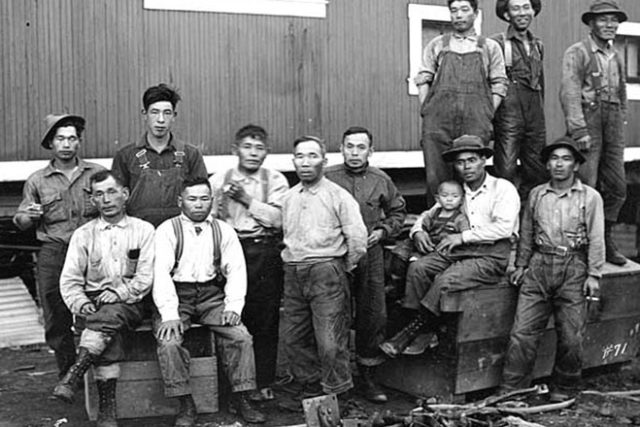
What kinds of work did these early “American Dreamers” do?
They did any job they could get. As they were “new arrivals” with limited English, they did the work that no one else wanted to do. Generally, it was hard, difficult, or dangerous.
They worked on railroads. Here, while the major lines had been built by Chinese and Irish immigrants before them, the original lines needed maintenance. Moreover, many new smaller lines, such as those to logging camps, needed to be built. Owing to the Chinese Exclusion Act of 1882, by the early 20th century there were few young Chinese laborers left to continue the arduous work.
The early Japanese also worked in sawmills and salmon canneries. They shucked oysters. In performing these first jobs, some were maimed or killed.
As the jobs were low-paying, it was taking all of the Japanese longer than they had thought to reach their goals. Continuing U.S. federal and state legislation aimed at preventing their success did not help. Paramount among these were the Alien Land Laws (Calif., 1913; Wash., 1921), which prevented “Aliens ineligible from citizenship” from owning land. As only Caucasians and African Americans were eligible for citizenship at the time, the law targeted the Japanese. Many Issei would accordingly long remain renters.
In their letters home, the lonely men began inquiring about a “girl in the village” whom they might marry.
This text was drafted by request to fill a gap in existing posters on the walls of the Nisei Veterans Hall. The posters are viewed frequently by school field trips.






